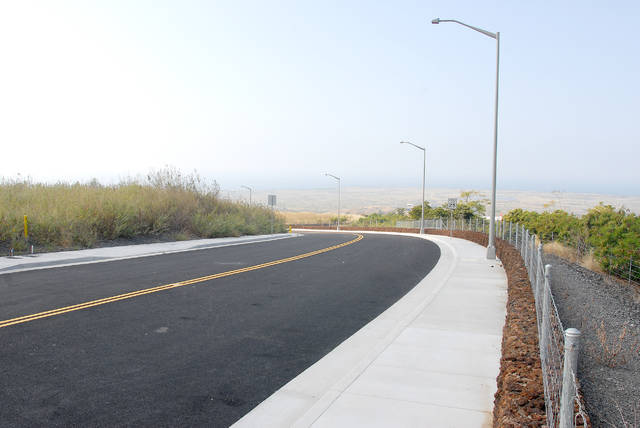KAILUA-KONA — Mauka of Ane Keohokalole Highway in West Hawaii, there sits an expansive parcel of empty land ready to birth the sights and sounds of a bustling neighborhood.
The Department of Hawaiian Homelands issued a request for proposal in February of 2016 to develop 163 single-family lots across two sections of the Villages of Laiopua Hawaiian home lands properties. The project includes a rent-to-own program wherein residents make rental payments that are applied toward their mortgages interest-free and then have the option to purchase those mortgages after 15 years.
The complexities of specialized development projects often result in unforeseen difficulties and delays, but after almost three years, prospective residents of the DHHL affordable housing project are frustrated and asking questions about the hold-ups keeping them from starting new lives on their ancestral lands.
“They’ve had three years to get a developer in there and we’re just disappointed in the process,” said Bo Kahui, executive director for Laiopua 2020 and the board director of the Villages of Laiopua Homesteaders Association. “I think the Native Hawaiian community begins to become very discouraged about why this takes so long.”
DHHL has selected a developer, Ikaika Ohana, which is working in concert with Urban Housing Communities in that role. But a factor in the overall length of the process may have something to do with how long it took to officially award the contract.
According to the RFP, accessible at DHHL.hawaii.gov, the estimated contract award date was May of 2016. James Rock is a senior development manager with Urban Housing Communities and is currently working on the development agreement for the project. He said he believed his company’s partner in the venture, Ikaika Ohana, was officially awarded the contract sometime in the third quarter of 2017.
Kahui said he spoke to Stewart Matsunaga, listed on the RFP as master-planned community development manager with the DHHL Land Development Division, about the housing project’s status at a meeting in Hilo in September.
Kahui recalled part of Matsunaga’s explanation for the current operational timeline was that the “RFP had gone back and forth.”
As to what issues may have stalled the awarding of the contract, or if it was in fact stalled, Matsunaga and the DHHL communications department did not return several requests for comment by press time Friday.
Rock said that the next major milestone before construction can begin is striking a development agreement with DHHL, which he described as more complicated in this case because of the development’s size and specific conditions that have to be met — one of which is navigating federal fair housing guidelines because of such a narrowly targeted tenant base of only Native Hawaiians.
He added it’s hard to answer when the development agreement will be completed but said, “We are engaged daily on the matter.”
The next major milestone before construction can begin would be the accumulation of all the necessary funding resources. As to the various funding options it plans to pursue and what those choices would mean for construction timelines, Matsunaga and the DHHL also did not return several requests for comment.
The site has some advantages toward speedier construction once it actually does commence. Rock said namely that DHHL has already installed important infrastructure — roads and certain water, sewer and electrical backbones — at the sites.
Rock added past experiences would indicate a 14-18 month rough timeline for similar construction of apartments.
However, more work tends to accompany a project like that at the Villages of Laiopua because structures are single-family homes.
Kahui said his office continues to receive inquiries from anxious Native Hawaiians, which he believes represent a significant portion of the community in West Hawaii.
According to census data available at census.hawaii.gov, state population estimates include an estimate that 35.3 percent of Hawaii County’s population was comprised of “Native Hawaiians and Other Pacific Islanders, race alone or with other races” as of July, 2017.
To qualify for entrance into the Villages of Laiopua Hawaiian home lands project, applicants must be at least 50 percent Native Hawaiian.
Kahui said that as of June 30, 2016, there were a total of 5,729 residential applications filed by Native Hawaiians with the DHHL on Hawaii Island alone.
His point was that speeding up the development of 118 units in Laiopua Village 4 and the accompanying 45 units in Village 5 would not only appease a portion of the Native Hawaiian community, but that it would free up other sources of affordable housing for different demographics also in need of such accommodations.
“If we assist Native Hawaiians into these housing programs then that offers opportunities for other stakeholders in the community to find housing conducted by the state, federal and county governments,” Kahui said.
Email Max Dible at mdible@westhawaiitoday.com.



